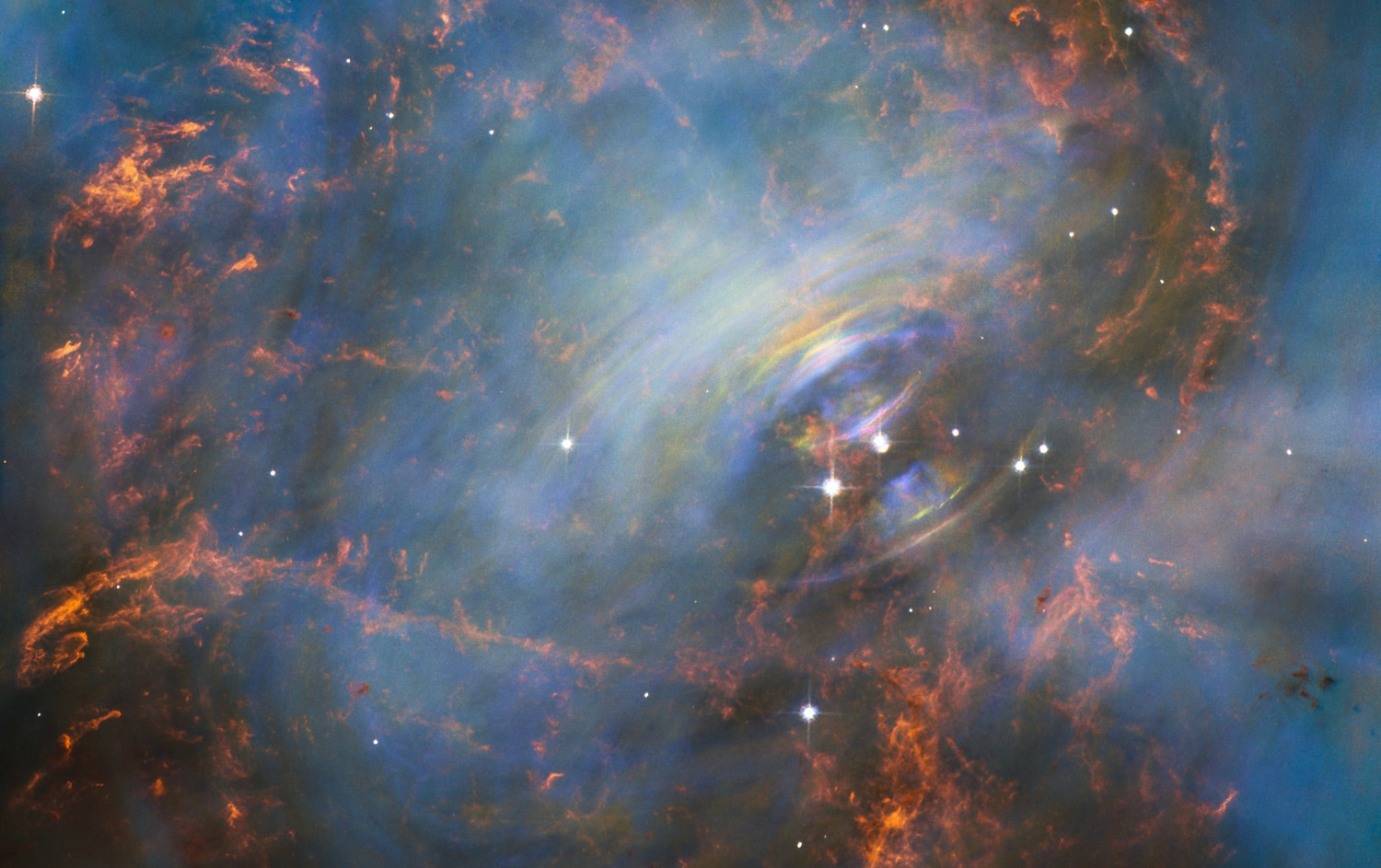Create a free profile to get unlimited access to exclusive videos, sweepstakes, and more!
Hubble Takes a Long Look Into the Heart of the Crab

7,500 years ago, a massive star exploded.
It had lived a short life, comparatively, running through its nuclear fuel of hydrogen, helium, carbon, neon, oxygen, silicon; each element fusing faster in turn in a sprint to the finish.
Silicon fuses to iron. When that began, everything for the star ended. Iron built up in the core, and several processes conspired to cause the core’s demise. It was already incredibly dense, but fierce and inexorable quantum mechanical laws took hold, squeezing it further. It collapsed down further, becoming a ball of tightly squeezed neutrons just a few kilometers across.
When it did, it released a flash of energy so colossal it defies our puny human brains. To wit: When the core collapsed, the outer layers of the star started to fall in as well. Moving at high speed, this material was a tsunami with a mass of several octillion tons crashing down… yet the flash of energy from the core was so huge it was able to halt the infall, turn it around, and have enough power left over to fling that same material — several times the mass of our own Sun — outward at a significant fraction of the speed of light.
That is the immensity of a supernova. The star had finished, but a new phase had begun.
The light from this flash traveled outwards in all directions, and, about 6,500 light years later, that spherical wave of light passed by the Earth. A bright star erupted in the constellation of Taurus on July 4, 1054, then faded over the course of many weeks. Humans didn’t have the scientific understanding then to know what they had seen, but 704 years later a comet hunter named Charles Messier saw a faint fuzzy object in his telescope. It looked like a comet, but clearly wasn’t. Frustrated, he made a note of its position, and even started a catalog of such objects that he might accidentally confuse with comets.
Thus we now call this object M1, for the first object in Messier’s iconic catalog of interesting objects in the sky. But most people know it as the Crab Nebula.
Even now, more than a millennium later, we see the gas in the explosion expanding. We also see the collapsed core of the progenitor star, still glowing hot from the fires that forged it. We call it a neutron star, and moreover it’s a pulsar, appearing to blink on and off as it spins rapidly, two hot spots marking its magnetic poles swinging into and out of our view. And again, to emphasize the boggling nature of this, remember that that is an object with more than mass than our own Sun, but it’s spinning 30 times per second.
And it’s still a force to reckon with. It blows a fierce wind, energizing electrons around it into a flow moving outward at relativistic (extremely high) speeds. This gas glows blue, as can be seen in the newly released Hubble image above. It fills the volume around the pulsar (the upper-right star in the bright pair near the middle of the image). The gas forms ripples that expand outward into the ribbons and filaments of the gas from the star itself that exploded long ago (seen as mostly red).
The Hubble image shows this expansion in a sneaky way. Observations from 2003, 2005, and 2013 were combined to create this image. Over that time the wind from the pulsar expanded, moving far more rapidly than the gas from the explosion. So while the fine tendrils around the edges of the image appear motionless, the Crab wind made slightly larger ripples in each subsequent observation. Displayed in different colors, this creates a rainbow effect, revealing that incredible expansion.
I’ve seen the Crab a few times through my own telescope, and it never look like much more than an elongated blob. Larger telescopes reveal the finer structure, and Hubble shows us just how fine it is; those streamers look like the shredded remains of an explosion, leaving no doubt of the cause of this magnificent structure. At one point years back, astronomers would commonly say that their field of study could be divided fairly evenly into two groups: The Crab Nebula, and everything else.
That’s changed over the years; we now know of many more kinds of objects than we did back then. Exoplanets, black holes, staggering varieties of stars and galaxies, worlds in our solar system, and more. But the Crab is one of the nearest and best studied supernova explosions, and one of the most beautiful to boot. It will always be a centerpiece of astronomical study, and astronomical artistry.


























